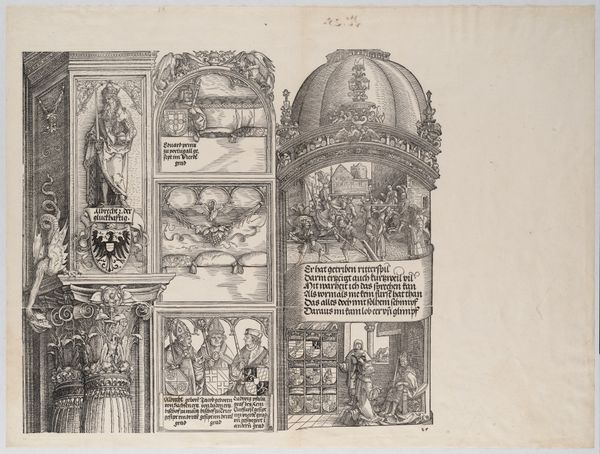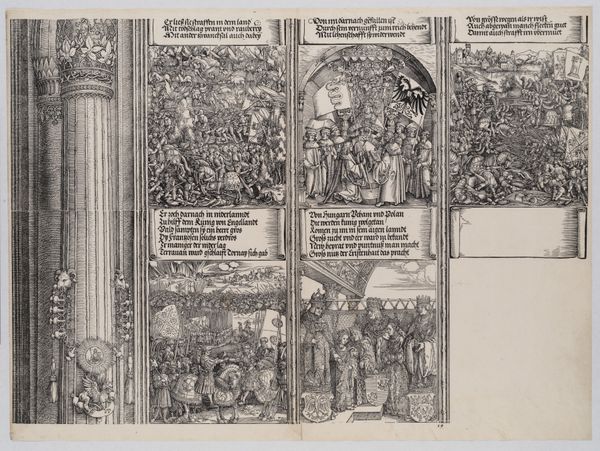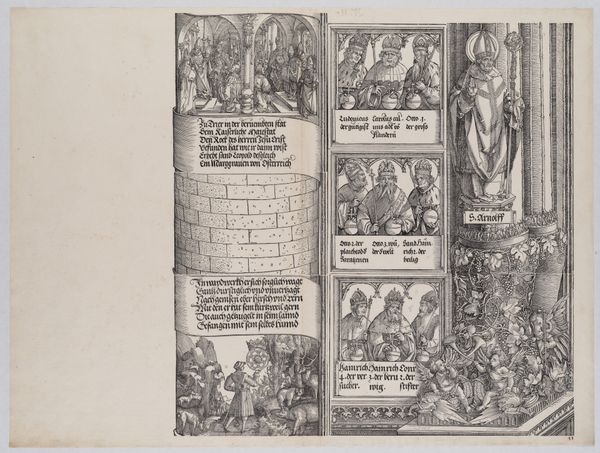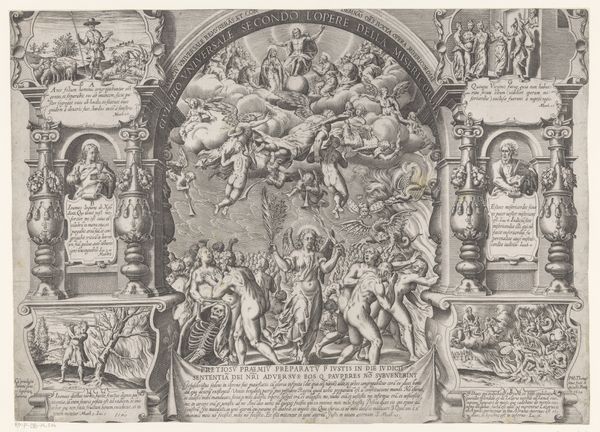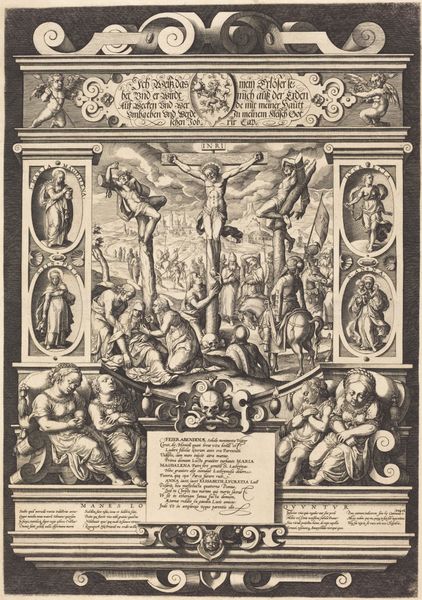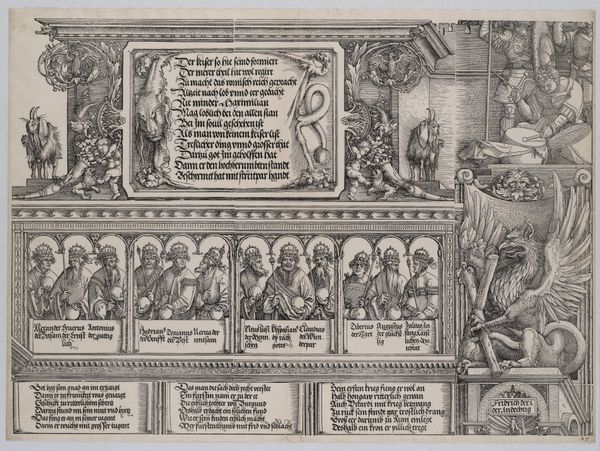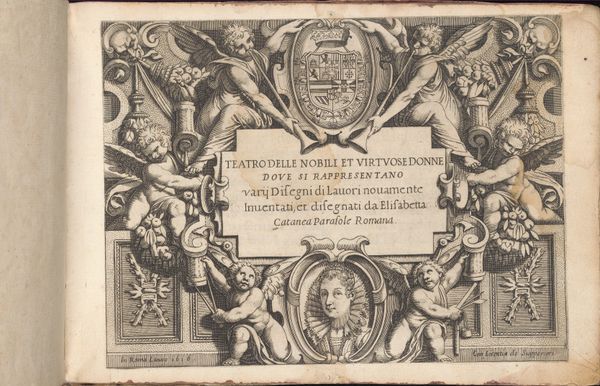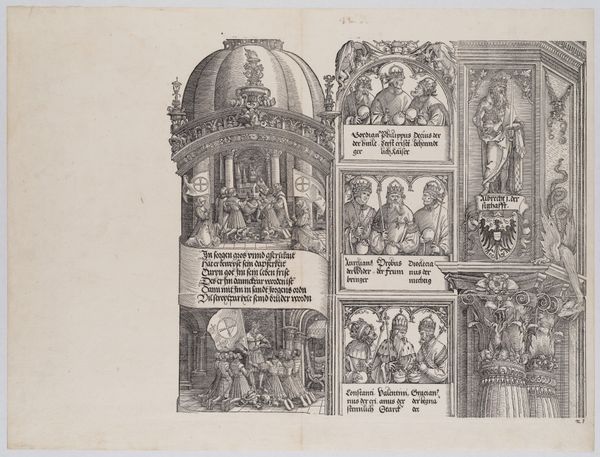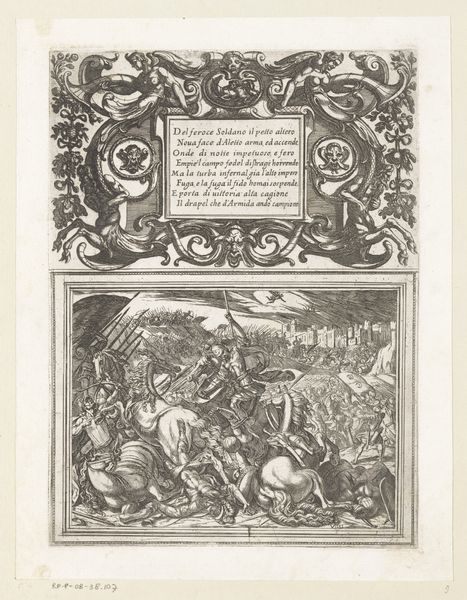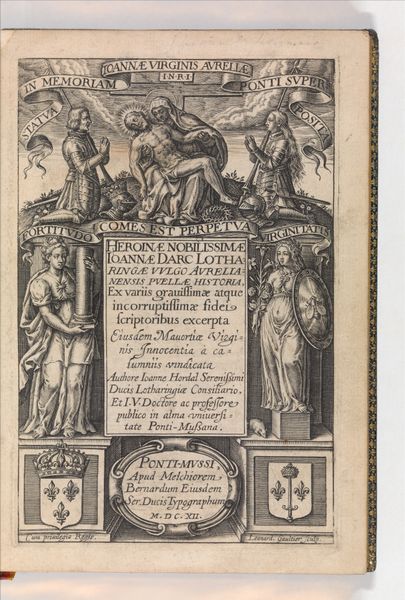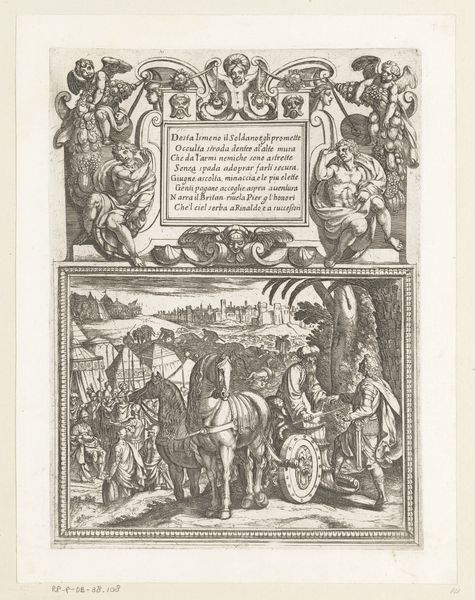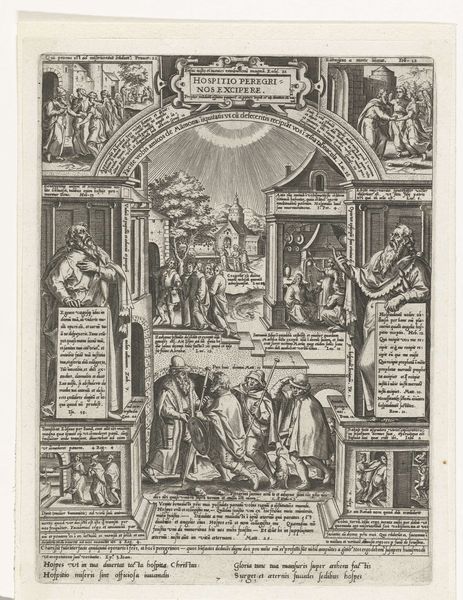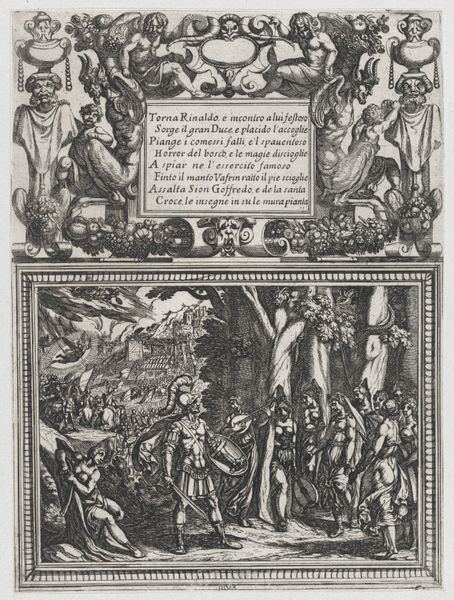
The Upper Section of the Right Portal, with the Inscription on a Stag Skin; a Frieze with Busts of Roman Emperors; and the Entablature of the Columns, from the Arch of Honor, proof, dated 1515, printed 1517-18 1515
0:00
0:00
drawing, print, engraving
#
drawing
# print
#
figuration
#
history-painting
#
northern-renaissance
#
engraving
Dimensions: Sheet: 18 5/16 in. × 25 in. (46.5 × 63.5 cm)
Copyright: Public Domain
Art Historian: Here we have "The Upper Section of the Right Portal, with the Inscription on a Stag Skin; a Frieze with Busts of Roman Emperors; and the Entablature of the Columns, from the Arch of Honor," an engraving completed by Albrecht Durer around 1515, though printed a couple of years later. It’s currently held at the Metropolitan Museum of Art. Artist: Whew! That's a mouthful. My first impression? It's overwhelmingly… ornate. A sort of controlled chaos. It's packed with imagery, different textures, and little vignettes, all crammed together. Very impressive. Art Historian: It is rather overwhelming. This piece was part of a massive, ambitious project commissioned by Emperor Maximilian I. He intended to create a triumphal arch on paper, so to speak, as a form of imperial propaganda. It was meant to be huge—around ten feet tall! Durer, along with collaborators, designed the various components. Artist: Propaganda, huh? Interesting that it takes this form. All those tiny, precise lines creating figures and text, it seems like an exercise in controlled messaging through painstaking detail. Almost compulsive in its rendering. Art Historian: Exactly. The printing press allowed for wider dissemination of the Emperor’s image and authority. These emperors, the heraldry, and carefully chosen words—it all works to establish lineage and legitimacy. Consider how this meticulously crafted image could be reproduced and shared, amplifying Maximilian's power. Artist: It’s quite different from today's media, but yeah, that makes perfect sense. I'm drawn to the little details – the stag skin inscription you mentioned and those slightly absurd-looking creatures flanking it. Gives the piece a touch of whimsy amid all the serious imperial business. It reminds me of being inside of a beautifully illustrated manuscript; like stepping inside of illuminated history itself. Art Historian: A good observation. While primarily a vehicle for political messaging, Durer infused it with his unique artistic flair. The stag, for instance, could symbolize royalty and the hunt, further tying Maximilian to traditional aristocratic virtues. These symbolic flourishes, coupled with precise engraving techniques, created a powerful visual statement. Artist: Looking at this has made me want to go back to printmaking. It reminds us that everything can be seen in more than one way: the micro-details within a grand and sweeping statement about authority, art, history and power. Art Historian: Absolutely. The Arch of Honor demonstrates how art served strategic purposes and reinforces how context fundamentally informs artistic creation.
Comments
No comments
Be the first to comment and join the conversation on the ultimate creative platform.
